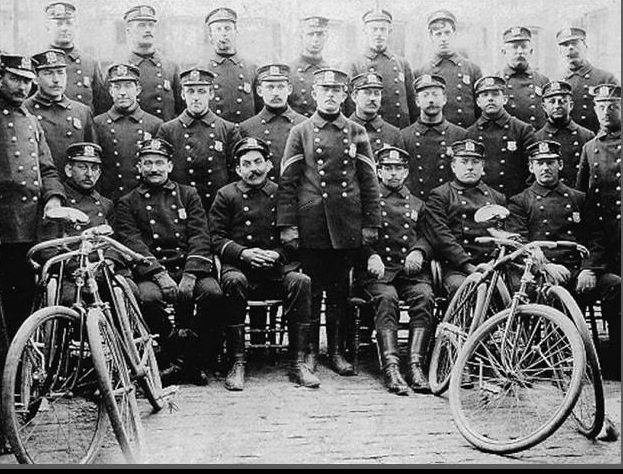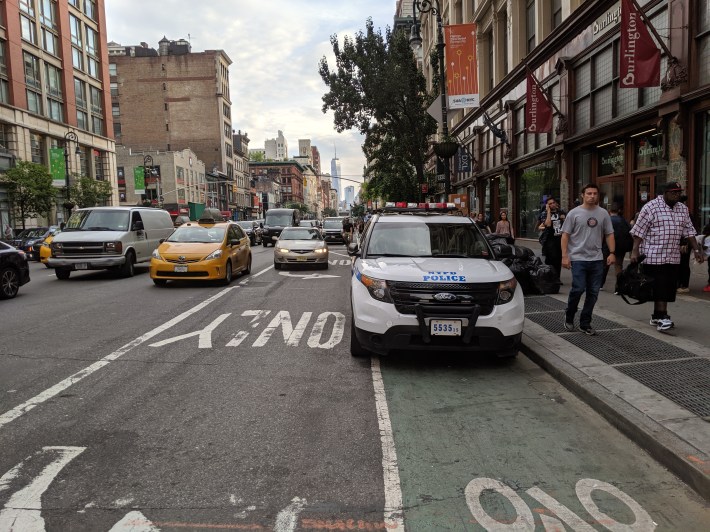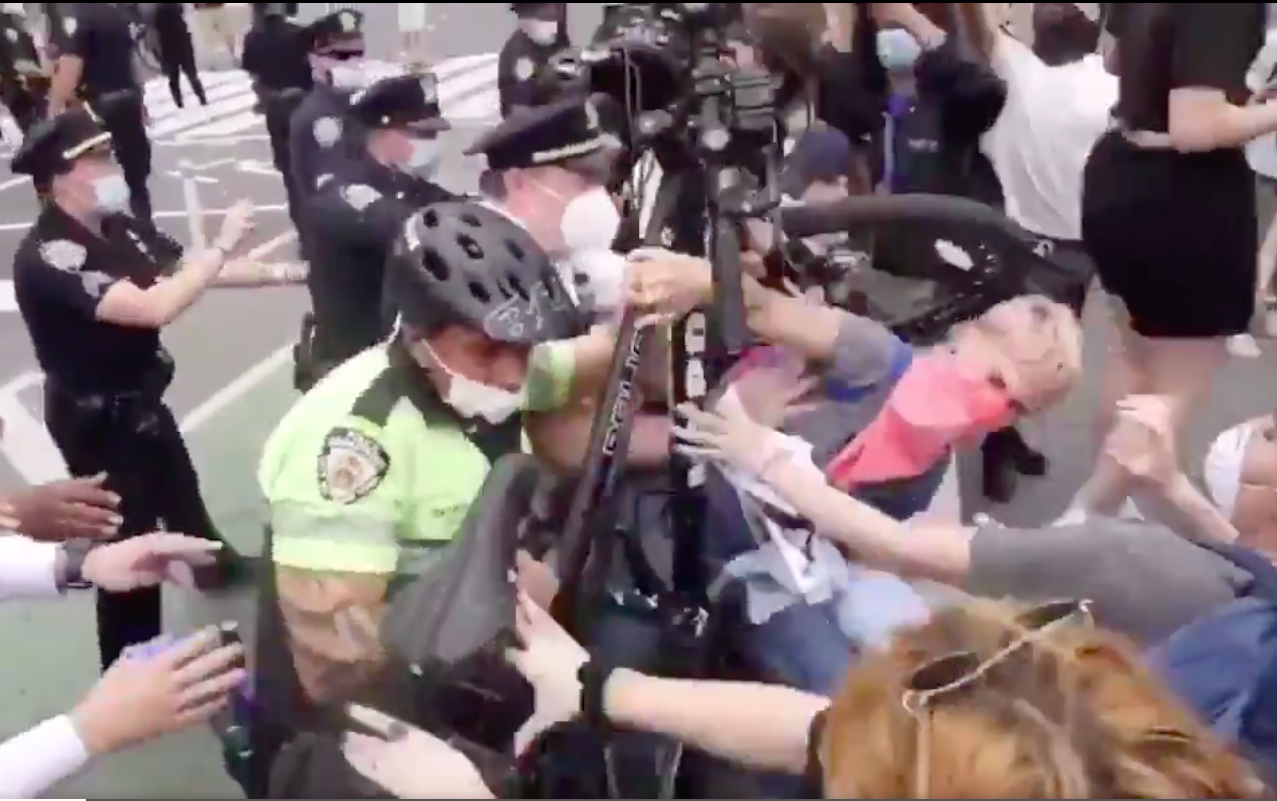
Bike New York this week called on the NYPD, among other things, to put more officers on bicycles in order to improve community policing. But the NYPD’s recent use of bikes against Black Lives Matter protesters — as well as the NYPD’s history with biking and relations with cyclists — shows that this demand is deeply problematic.
Yes, having cops work in SUV cruisers reinforces their “windshield perspective” and alienates them from the communities they police, and more cops definitely should patrol on bikes. But the force would need to rethink the training officers get on biking — as well as its relationship with the cycling community — before that would be a viable strategy.
The NYPD has a long history with biking, dating back to the early 1900s, when a bike-mounted squad pursued lawbreakers. The modern history of NYPD biking, however, began in the 1990s, as part of an earlier round of "community policing." In mid-1992 the (now defunct) Housing Authority Police put 36 cyclists on the beat and publicly celebrated the efficacy of bike patrols.
The NYPD also began buying bikes in the 1990s, and since then, many precincts have maintained a few bikes for patrol, in particular, mountain bikes — which have a macho, athletic image.

Yet, even as cycling has spread among civilians in the last 20 years, NYPD attitudes toward it have hardened. A turning point was the 9/11 attacks, which changed the NYPD’s stance toward civil disobedience. The department began cracking down on cycling demonstrations, such as Critical Mass, culminating in a confrontation between police and 5,000 Critical Mass riders at the 2004 Republican National Convention.The police brutally arrested 234 riders; the city eventually paid $18 million in lawyers' fees and suit settlements over NYPD conduct.
With the spread of hundreds of miles of bike lanes and launch of the Citi Bike program, the city has become friendlier for cyclists — but drivers still nursed grievances. Motorists proved unwilling to concede cyclists the space afforded by the new lanes and — guess what? — many cops have sided with them, shirking enforcement and using NYPD vehicles to block bike lanes. (Let’s not even get into the history of NYPD harassment of cyclists or victim-blaming of crash victims.) The alliance is no mystery: The average police officer commutes by car from the outer boroughs or suburban counties. Cops simply don't identify with people cycling for work: tens of thousands of bike commuters, as well as low-wage delivery workers, most of whom live in Manhattan or inner-borough neighborhoods.

Ideally, getting more cops on bikes would help them lose their windshield perspective. But how cops use bikes is just as important as whether they use them. In the last several years, New York actually has trained more bike cops than it has ever had — but, for the most part, these cops aren’t using bikes for patrolling. They’re the officers of the Strategic Response Group, whose chunky bikes are driven for them to special events in large vans.
After the Occupy Wall Street protests of 2011 and the 2014 London Riots, the NYPD got Department of Homeland Security money to hire some 800 officers for the SRG, which the brass pledged would focus on antiterrorism. Of course, the SRG has been used principally to suppress popular protests and even surveil left-wing groups. By 2017, the unit had trained and outfitted 250 officers to use bicycles in crowd control — which was supposed to be a “friendlier” alternative to shields, helmets and horses for riot policing (and got the NYPD fawning coverage on local TV). The SRG bike unit’s first major outing was directing crowds at the Women’s March before President Trump’s inauguration.
In recent protests, we’ve seen SRG police using their bikes to block the movement of and even ram protesters — a hard-edged tactic, veering into frank brutality, which needless to say is the antithesis of community policing. The need for widespread retraining of this militarized group — and, in certain cases, disciplinary action against individual officers — is glaring.
As a first step, however, we must highlight the hypocrisy of the NYPD’s strategy and demand that SRG bike cops actually bike through the city they trained to protect. Then we should demand that the NYPD actually train cops to learn and enforce the Vehicle and Traffic Law as it pertains to cycling, and use some courtesy, professionalism and respect when dealing with the cycling community.
Eric Schewe is a historian and Queens resident. He writes regularly for JSTOR Daily and on Twitter @nychistorybiker.






